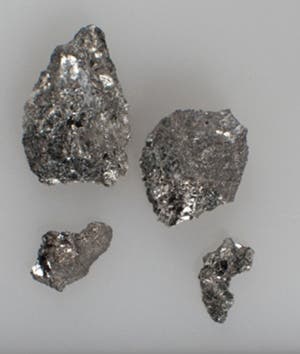Researchers have demonstrated for the first time the existence of a naturally occurring topological insulator – an exotic class of materials that possesses the unique ability to conduct electricity and the surface, but not on the inside. Previously, topological insulators have been studied and created in labs only, however now a mineral has been found that acts as one. Moreover, this natural topological insulator is a lot better than synthesized ones since it lacks structural defects typically associated with synthetic materials.
Ordinary insulators keep electricity from flowing through out the bulk material since electrons fully occupy energy bands. In topological insulators, however, the spin-orbit interaction is so strong that the insulating energy gap is inverted — the states that should have been at high energy above the gap appear below the gap. As a result, we have highly conducting metallic states on the surface, while the inside is completely insulated.
First predicted in 2005, scientists have since then rapidly enhanced their understanding and first synthesized a topological insulator in 2008. Just a few weeks ago, researchers demonstrated the first organic topological insulator. What makes this class of materials so exciting is its ability to boost applications of spintronics devices that work with electron spin, rather than voltage. Quantum computers that encode information in electron spin would be primarily first to benefit from the advent of topological insulators.
Pascal Gehring, a solid-state physicist at the Max Planck Institute for Solid State Research in Stuttgart, Germany along with colleagues collected samples of a peculiar mineral called kawazulite from a gold mine in the Czech Republic. Made out of bismuth, tellurium, selenium and sulphur, the analyzed 0.7 millimetres wide crystalline sheet had electron energy and momentum distribution that matched predictions for a topological insulator.
The analysis was made using photoelectron spectroscopy, which involves measuring the properties of electrons dislodged from a material when ultraviolet light is fired at its surface. Curiously enough kawazulite was synthesized in the past, however its properties are no near as reliable as the natural occurring one, since topological insulators built in the lab always have structural defects that create unwanted conduction in the bulk.
“Surprisingly, the team’s natural sample is cleaner than synthesized samples — even though you would expect it to be more dirty,” says Feng Liu, a materials scientist at the University of Utah in Salt Lake City,. “It may turn out to be cheaper to use a natural supply of topological insulators than it is to make, process and clean them in the lab.”
The findings were reported in the journal Nature Letters.










